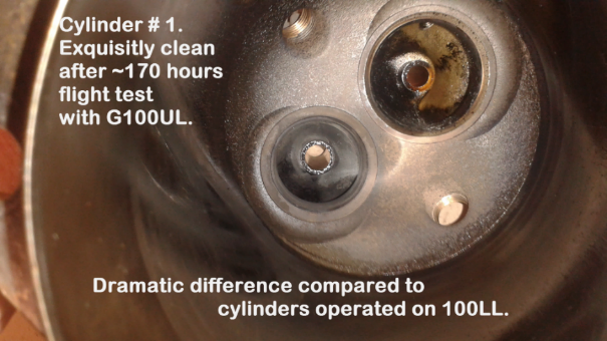https://gami.com/g100ul/g100ul.php
GAMI now has an STC for their unleaded AVGAS, which meets all the octane requirements of 100LL, including the 99.5 MON minimum, along with a matching RVP of 7psi. It seems the G100UL contains the same components of normal aviation gasoline, in somewhat different proportions. Plus a unique octane booster, a nitrogen containing amine.
It seems the fuel, for various reasons, can't meet the D910 specs that 100LL is produced under. But that does not seem to matter. The FAA does not certify the fuel. The FAA certifies what the engine/airframe manufacturer requires for fuel. G100UL contains 20% xylene and that increases the boiling point (end point) about 8 DEG F beyond D910 specs. (That won't matter, and is not operationally a problem, as that spec was made in the 1930's and we know a lot more about fuels now) .
The fuel contains:
Isopentane
Aviation alkylate
Mixed xylenes
m-toluidine nitro-amine octane booster, GAMI found a benign amine that works well. It supposedly comes from a product used in the "ink" industry and is produced by a Bayer offshoot company. Maybe it's similar to PEA that is used in Chevron Techron and that helps keep combustion chambers clean, as after 170 hours, the combustion chambers of normal engines are loaded with carbon.
In any case, the use of unleaded will allow the use of Synthetic oils, and probably greatly extend TBO. Our Rotax powered, unleaded burning motorglider uses Mobil 1, 10W-40 MX4t oil and the engine is spotless inside. Zero troubles and no plug fouling.
I am excited to try this new Unleaded Avgas.

GAMI now has an STC for their unleaded AVGAS, which meets all the octane requirements of 100LL, including the 99.5 MON minimum, along with a matching RVP of 7psi. It seems the G100UL contains the same components of normal aviation gasoline, in somewhat different proportions. Plus a unique octane booster, a nitrogen containing amine.
It seems the fuel, for various reasons, can't meet the D910 specs that 100LL is produced under. But that does not seem to matter. The FAA does not certify the fuel. The FAA certifies what the engine/airframe manufacturer requires for fuel. G100UL contains 20% xylene and that increases the boiling point (end point) about 8 DEG F beyond D910 specs. (That won't matter, and is not operationally a problem, as that spec was made in the 1930's and we know a lot more about fuels now) .
The fuel contains:
Isopentane
Aviation alkylate
Mixed xylenes
m-toluidine nitro-amine octane booster, GAMI found a benign amine that works well. It supposedly comes from a product used in the "ink" industry and is produced by a Bayer offshoot company. Maybe it's similar to PEA that is used in Chevron Techron and that helps keep combustion chambers clean, as after 170 hours, the combustion chambers of normal engines are loaded with carbon.
In any case, the use of unleaded will allow the use of Synthetic oils, and probably greatly extend TBO. Our Rotax powered, unleaded burning motorglider uses Mobil 1, 10W-40 MX4t oil and the engine is spotless inside. Zero troubles and no plug fouling.
I am excited to try this new Unleaded Avgas.

